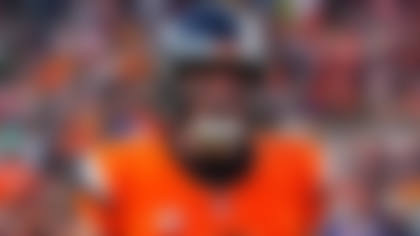The NFL treated its fans to a great game Sunday when the Pittsburgh Steelers narrowly beat the upstart Arizona Cardinals 27-23 in Super Bowl XLIII. As New Orleans Saints running back Reggie Bush said to me Monday, the Cardinals' performance was inspirational to him and the rest of the league's players, who believe their team can make it to the big game just like Arizona did this year.
The Cardinals lost to the better team in Tampa, Fla., but they won a number of the battles within the game. Arizona had more first downs, more total yards, a better rushing average, better yards per pass attempt and better yards per play, and they put three punts inside the 20-yard line. The Cardinals have lots to build upon when you consider they generated 407 yards of offense against the NFL's top-ranked defense. But other important issues were part of this great game.
Every year, the Super Bowl provides a few wrinkles that set the stage for the next season. They trigger reminders to the men running a team's draft and the coaches building offenses and defenses. Here are a couple of things that Super Bowl XLIII taught me -- things I expect to see during the 2009 regular season.
Pass out of the shotgun
Traditional West Coast-offense coaches don't like the shotgun, but it's becoming more and more apparent that the formation is here to stay and its use is growing.
The Cardinals and Steelers had a combined 48 shotgun snaps in the Super Bowl. Arizona tried one run and 32 passes from the shotgun; Pittsburgh didn't bother to run the ball once on its 15 shotgun plays. Kurt Warner and Ben Roethlisberger combined to complete 31 of the 47 passes thrown out of the shotgun for 398 yards. Imagine if they had a strong run game from the shotgun to balance the attack.
More no-huddle, less run
Both teams incorporated the no-huddle into their offensive philosophy, and they need to do more of it next season. The no-huddle puts a lot of stress on the defense.
All 14 plays from the no-huddle in the Super Bowl were passes, so here's another dimension that needs to develop a legitimate run game as a complement. Warner and Roethlisberger, who now have five Super Bowl appearances between them, completed 10 of 14 passes from the no-huddle for 167 yards. That's 16.7 yards per completion, even though the defense knows you're not running the ball. That's a fine accomplishment.
There were 38 running plays, compared to 77 passes, called in the Super Bowl. That means the Cardinals and Steelers ran the ball just 33 percent of the time, and I don't see that trend going away. In fact, when you consider that neither team could even average 3 yards per carry, it might be time to acknowledge what really got your team to the Super Bowl. The longest run in the game was 15 yards, but eight pass completions were longer than that.
Throw the ball inside the 10
Offensive approaches inside the 10-yard line are really changing, and this Super Bowl was a prime example. There were 20 plays called from inside the opponent's 10 during the game -- seven runs for a total of zero yards and one touchdown; 13 passes for 26 yards and three touchdowns. Still, the 100-yard interception return for a touchdown by Steelers linebacker James Harrison was a great reminder of how difficult it can be to execute a pass play in a confined space.
The Cardinals came into the game with seven touchdown passes from the 1-yard line. They stayed true to form in the Super Bowl with three passing attempts from the 1, resulting in two touchdowns and Harrison's interception return for a score. Neither team really had the big running back who would pile-drive the defense. Maybe they need to think about a player like the Ravens' Le'Ron McClain.
Forget about a 'caretaker QB'
In today's NFL, there's a perception that a team with a great defense just needs a quarterback who won't turn over the ball. It's naive to think a "caretaker QB" can win a Super Bowl. The Steelers had the No. 1 defense in the NFL this season, but they still needed Roethlisberger's late-game heroics to win the Super Bowl. Roethlisberger was 5-for-7 passing for 84 yards and the game-winning touchdown in that final drive.
This is a quarterback-driven league, and the Super Bowl was a great reminder of that. Warner was my MVP had the Cardinals won the game.
Spread out a pressure defense
Both offenses realized that spreading out a pressure defense with a wide-open pass attack is a smart idea. By eliminating a lot of the traditional two-back sets (tight end, two wide receivers) and substituting three- and four-receiver sets, the offense takes away a defense's ability to bring the pressure it likes to apply. We'll see a lot more spread offenses next season, for sure.
Better have interchangeable parts
What came first, the chicken or the egg? I'm not sure about that one, but the Super Bowl convinced me once and for all that modern defenses need 11 athletes who are interchangeable. Defensive backs must be able to pressure the quarterback, linemen have to cover pass routes and linebackers can't be liabilities against spread sets that put them in space.
I saw the Cardinals line up with two men with a hand on the ground, and the Steelers had some looks where just one player had a hand on the ground. The Super Bowl taught us that it's critical to never let the quarterback or the center get a real picture of what's coming. A field full of "jokers" or "wild cards" is what's needed to play against these modern pass attacks. In Super Bowl XLIII, the Cardinals and Steelers did it as well as any team in the league.



